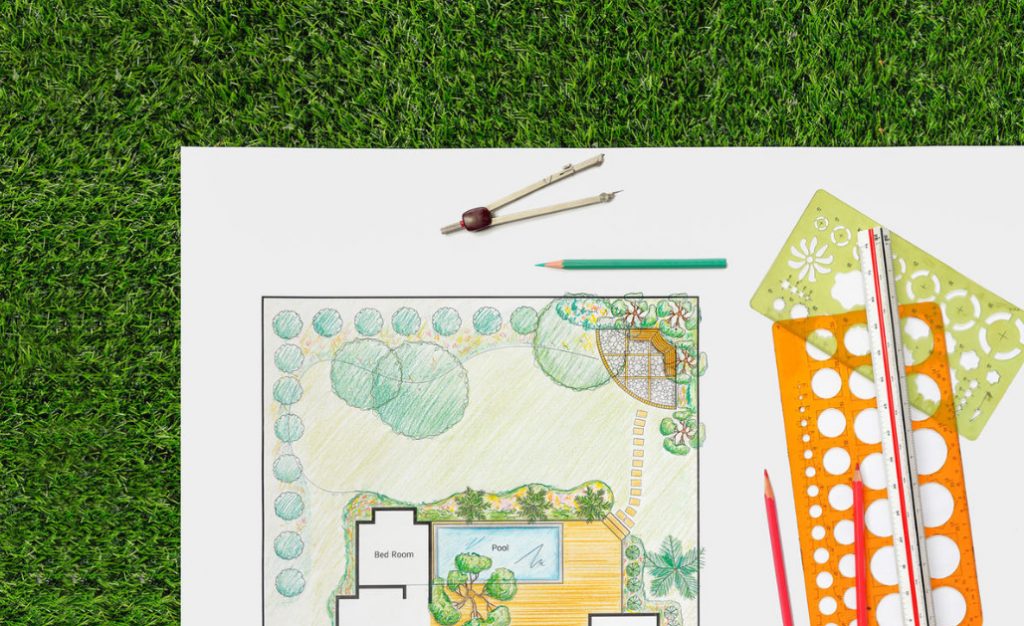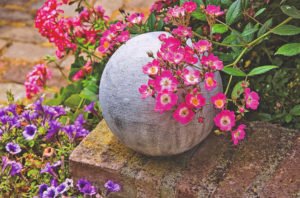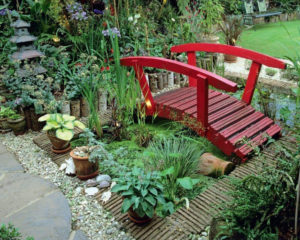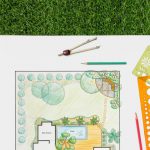Plan
As a result of the work done on a piece of paper, a “firm” basis was obtained. You can redraw the sketch several times or re-copy it – after all, we have to search for a compositional solution, and in order not to lose ideas by erasing the sketches on one sheet, it is better to define a different sheet for each idea. This way you will have several draft plans made on copies of the same base.

In order not to get confused in the variety of garden styles, let’s first focus on the choice of style direction, and they are known to be only two – landscape and regular. Often both are combined on the site. The second is convenient in the entrance area, gardening, the first-in the recreation area, as it promotes relaxation, contemplation and fits perfectly into the surrounding landscape.
Creating zones
The next stage is zoning the territory. There can be a large number of functional zones, but the main ones are residential (house), entrance (front part), gardening (fruit and vegetable planting area), recreation area, economic zone (shed, compost, toilet). Decorative compositions can be included in the garden area (complement, decorate it), and fill other corners of the garden.
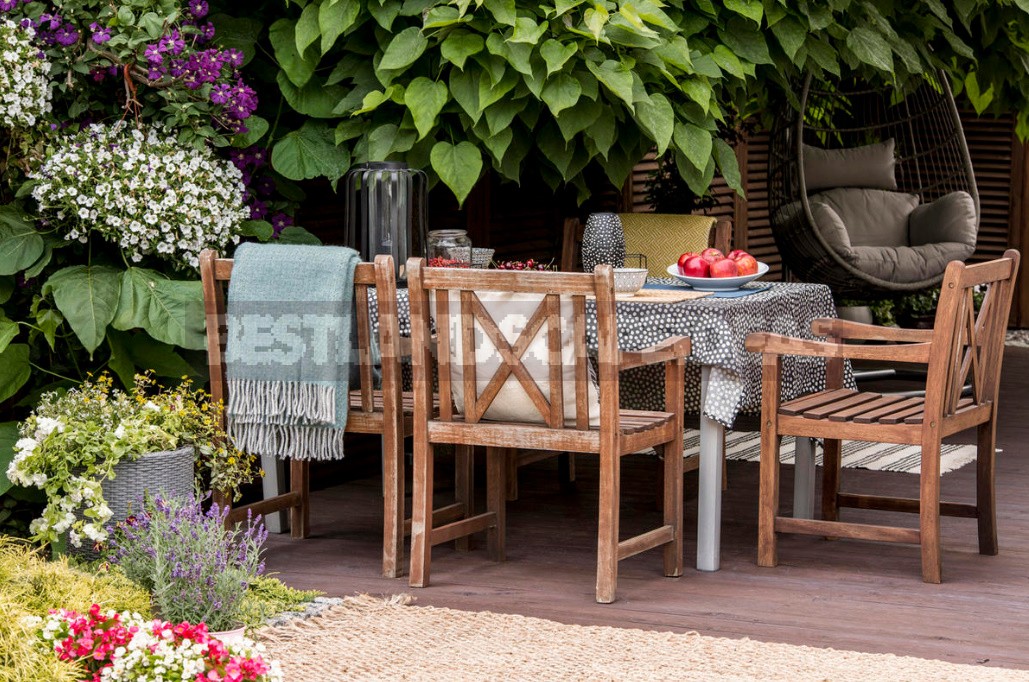
You can also add zones such as sports, children’s (Playground); ecological, which is a non-man-made area of wild nature (thickets of bushes, reservoirs, swamps, ravines, etc.), cleared of dry branches, dry woody vegetation; zone for growing certain types of ornamental plants (rose garden, etc.).

If the plan already shows the house, then zoning is easier-usually the children’s zone is located in a warm corner of the garden with maximum visibility, gardening – in the lightest part of the plot, the entrance-in front of the house, the recreation area – in the most picturesque place, the household – in a hidden corner. Shadow areas can be assigned to compositions of ornamental plants that are suitable for specific environmental conditions.
We mark the zones with “clouds” of different colors and link them with paths (a road and path network). It is noted that the main paths to ensure comfortable movement should be at least 1 m wide, secondary (which are used less often and a limited number of people) can be narrower (0.5-0.7 m), not continuous, but intermittent. The latter are also convenient in that they can be laid if they were not originally provided.
Planning plantings
The next stage is the placement of plantings. Compositions of annual and perennial flower crops can be marked schematically, tree and shrub vegetation should be applied more precisely, in more detail, taking into account the final size of plants, as well as the possible shadow cast by them on the planting of flower, fruit and vegetable crops.
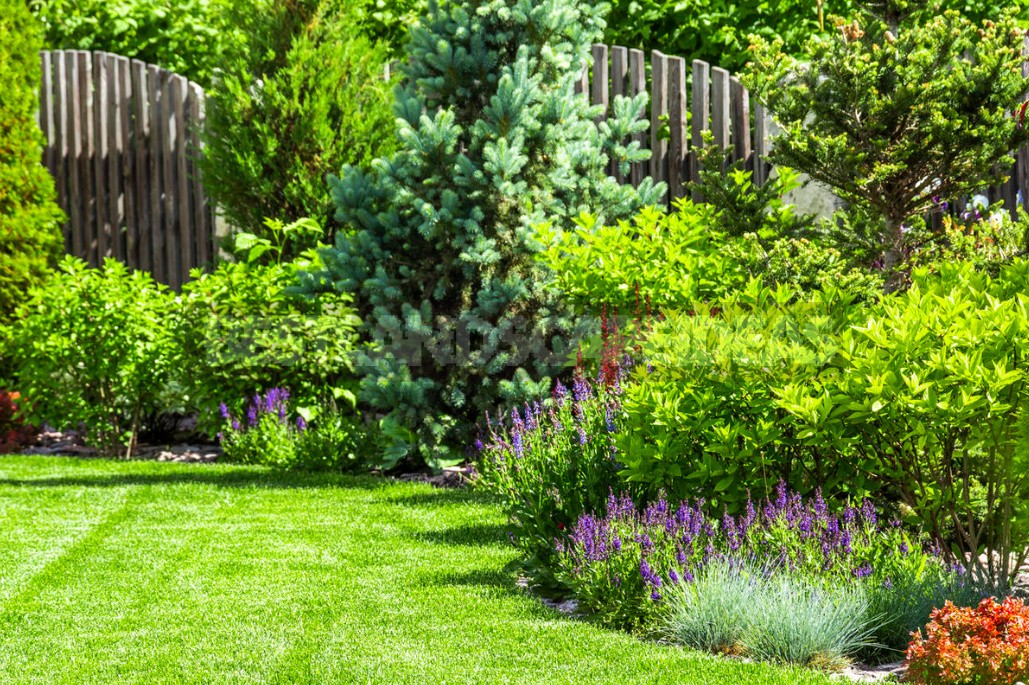
The range of plants must be selected taking into account the environmental conditions of the site: the plants must be hardy in a particular region and correspond to the climate zone, light level, and soil conditions. Do not forget about the main idea of the garden and its style, color scheme. Note that we do not draw on this plan a network of communications carried out to buildings, because in this case we are interested in the garden, but their location must be taken into account when placing plantings.
Drainage
The final stage is the design of engineering systems. If the site is stagnant water, you should think about the need to bookmark the drainage system (if necessary). If the terrain is very difficult or it is problematic to divert water from the territory, because at the bottom point there is a neighbor’s plot or in any other difficult case, then you will have to contact specialists for help in planning drainage. And you need to do this before you plant the plot with new plants.
Lighting
Already at the planning stage, you should think about garden lighting. Functional lighting of the territory can be planned and installed independently. But if you decide that you need a smart programmable system with different scenarios for lighting paths, reservoirs, and individual tree and shrub compositions, you will have to contact a specialized company. And here your plan is very useful.
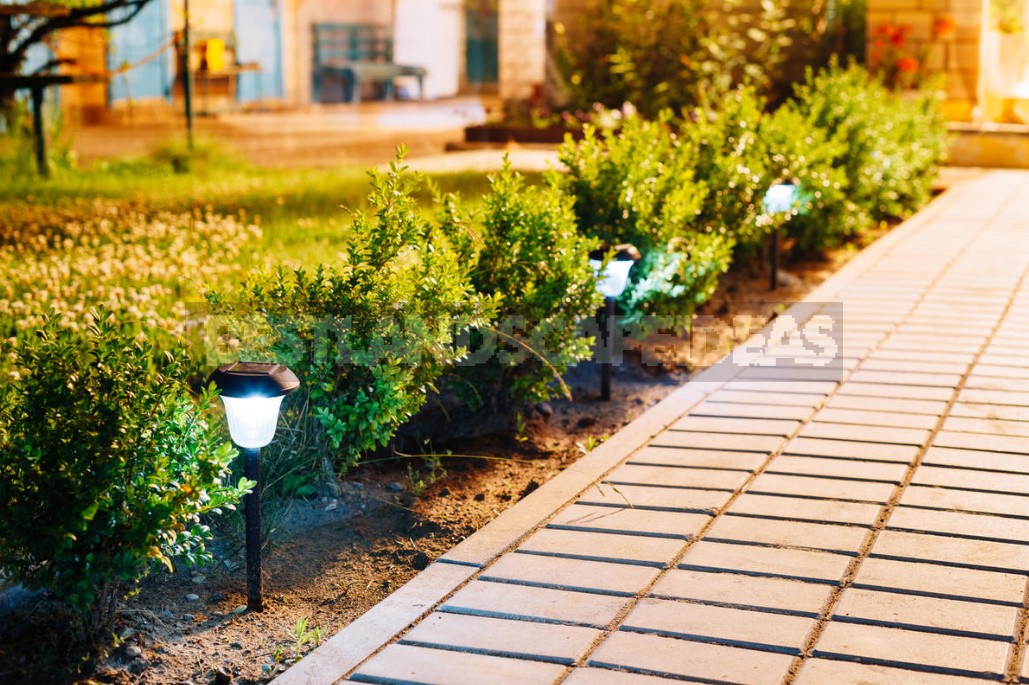
Irrigation
In our time, even on a small plot, you can place a functional irrigation system. This is a relatively new element of garden design, but if it is appropriate (there is a significant area of planting, lawn) – necessary and relevant. Automatic watering saves you time and effort, and also provides optimal moisture distribution for plants. You can leave the suburban area and do not worry about timely provision of plants with water.

Modern computer technologies allow you to design an underground irrigation system at the simplest level independently, without the help of specialists. And having all the measurements of your territory, it will be easy for you to move the boundaries of the plot, house, buildings, paths to the virtual plan, mark the main plantings, the area of the garden, the contours of the lawn.
